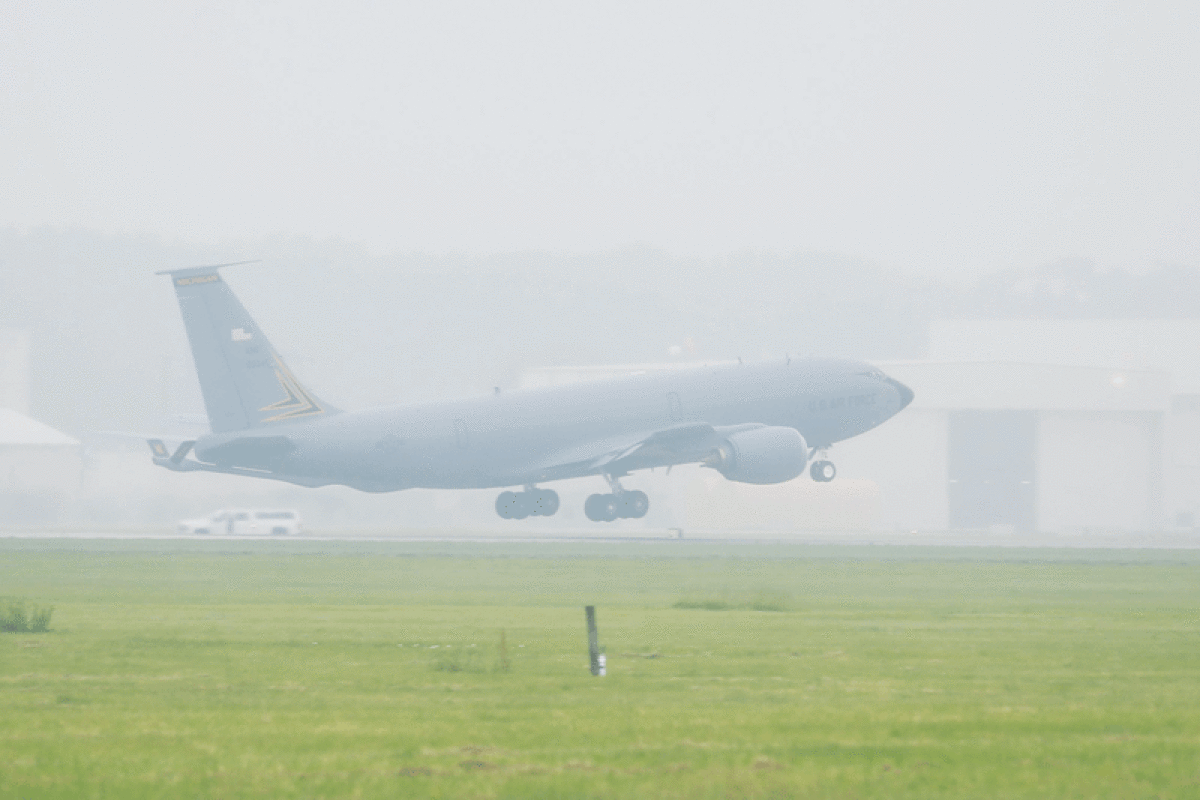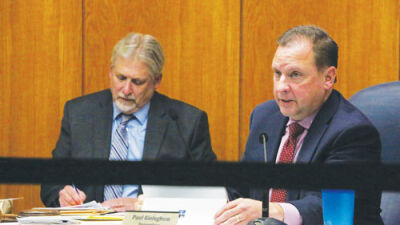HARRISON TOWNSHIP — When military planes roar by for a flyover, onlookers usually spot some of the U.S. Air Force’s fastest and flashiest jets. But on June 27, two unsung heroes of military aviation took off from Selfridge Air National Guard Base for a statewide tour in their honor.
The two KC-135 Stratotankers took off on a foggy and smoke-filled morning in late June for a nearly three-hour flight, buzzing by Michigan landmarks and communities in recognition of 100 years of in-flight refueling. Joined by two A-10 Thunderbolt II “Warthog” attack jets, the KC-135s showcased in-flight refueling across the state as part of a nationwide celebration of in-flight refueling’s centenary.
“On June 27, (1923) the Army Air Corps delivered fuel gravity-fed from one airplane to another airplane,” said Chief Master Sgt. Maurice Graves, group senior enlisted leader of the 127th Wing’s air refueling group.
On that date 100 years ago, 1st Lt. Virgil Hine and 1st Lt. Frank W. Seifert made the first in-flight refuel by running gas down a hose from their DH-4B biplane to another DH-4B on a flight from Los Angeles to San Diego. Though the six-hour flight proved refueling could be done, another flight was made on October 25, 1923, from Lumas, Washington to Tijuana, Mexico, in order to prove in-flight refueling could extend flight distances. A fatal accident a month later stopped in-flight refueling operations for about five years, but refueling resumed for demonstrations in 1928 and were fully embraced by the Air Force in 1948 to support the Strategic Air Command.
The first in-flight refueling planes were stationed at Selfridge in 1959 with the KC-97 Stratofreighter being flown by the 4045th Air Refueling Wing and the 500th Air Refueling Wing into the 1960s. The 127th Wing’s 171st Air Refueling Squadron began operating KC-135s in 2007.
The 127th Wing’s KC-135s feature five crew members, including one pilot and boom operator. The operators are the ones who handle the job of moving the fuel from plane to plane.
The mission of refueling planes in-air has become an essential part of the Air Force, giving equipment based in far and remote locations the ability to be utilized around the world.
“It’s aerial refueling that really expands our Air Force’s power,” said 1st Lt. Jacob Hargrove, a KC-135 pilot. “Without it we are severely crippled. We are the true force multiplier, doing so as a deterrence against our enemies and it really does boost our allies in doing such things.”
Planning for KC-135 flights begins well in advance of the mission and starts by examining expected weather conditions, planning routes, determining fuel loads and coordinating with the other receiving squadrons. Maintenance squadrons are also making sure planes are running as expected and operations support squadrons help with coordination between pilots.
KC-135 pilots begin their training by learning how to fly within 10 feet of other planes with further training focusing on in-air stability and managing the fuel being passed. Boom operators begin on simulators before moving onto a series of test flights over six months.
 Publication select ▼
Publication select ▼





















